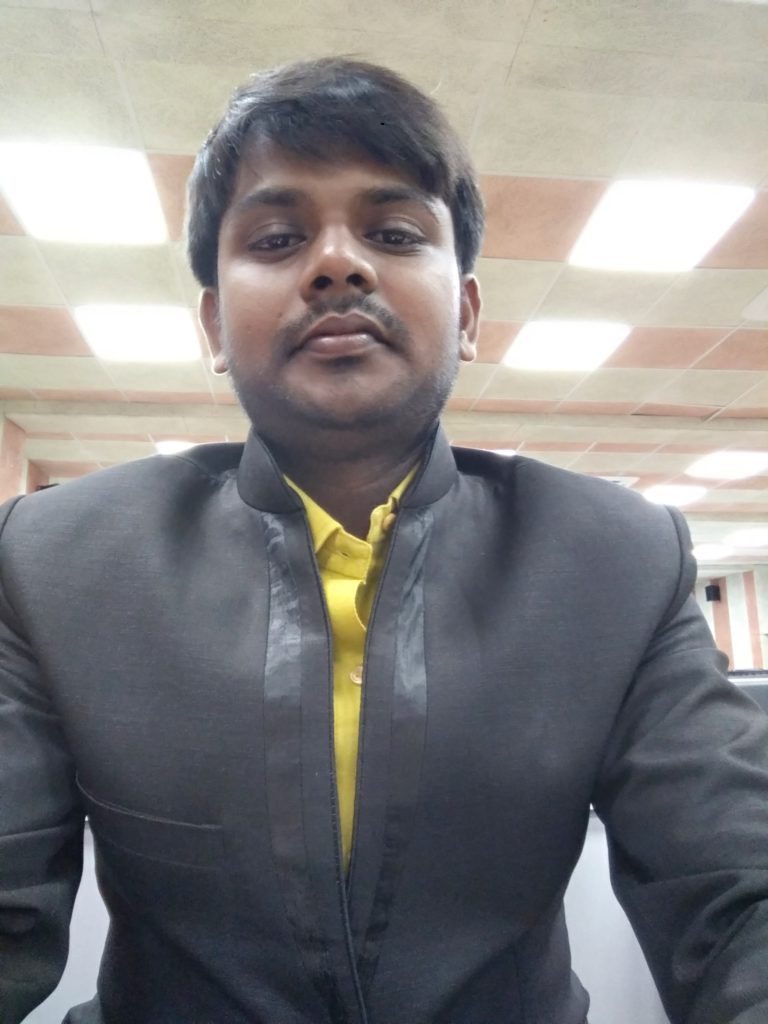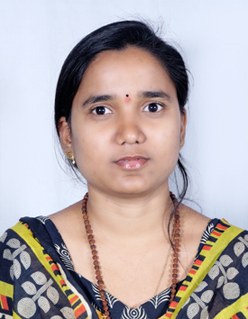Electricity and Magnetism
Course Attendees
Still no participant
Course Reviews
Still no reviews
Code(Credit) : CUTM1488 (3-2-1)
Course Objectives
- Study the electric and magnetic fields in detail.
- Study and explore the dielectric properties of matter.
- Study the relation between electric and magnetic fields.
Learning Outcomes
| COs | Course outcomes | Mapping COs with POs (High-3, Medium-2, Low-1) |
| CO1 | Understand electricity and magnetism using standard mathematical tools. | PO1-3, PO2-3, PO5-3 |
| CO2 | Develop an understanding of space and time necessary for understanding electrodynamics. | PO1-3, PO2-2, PO5-3 |
| CO3 | Develop and train problem-solving skills. | PO5-3, PO12-2, PO13-1 |
| CO4 | Establish the foundation for higher-level courses in physics, chemistry, and engineering | PO4-3, PO5-2 |
Course Syllabus
Module-I
Electric Field
Electric field: Electric field lines. Electric flux. Gauss’ Law with applications to charge distributions with spherical,
Conservative nature of Electrostatic Field. Electrostatic Potential. The Uniqueness Theorem. Potential and Electric Field of a dipole. Force and Torque on a dipole, cylindrical and planar symmetry, Laplace’s and Poisson equations
Module-II
Electrostatic energy of system of charges. Electrostatic energy of a charged sphere. Conductors in an electrostatic Field. Capacitance of a system of charged conductors. Parallel-plate capacitor. Capacitance of an isolated conductor. Method of Images and its application to: (1) Plane Infinite Sheet and (2) Sphere, Surface charge and force on a conductor.
Practice 1: Determination dielectric constant by using parallel plate capacitors
Module-III
Dielectric Properties of Matter: Electric Field in matter. Electrical Susceptibility and Dielectric Constant. Capacitor (parallel plate, spherical, cylindrical) filled with dielectric. Displacement vector D. Relations between E, P and D. Gauss’ Law in dielectrics, Polarization, Polarization charge
Module-IV
Biot-Savart’s Law and its simple applications: straight wire and circular loop. Current Loop as a Magnetic Dipole and its Dipole Moment (Analogy with Electric Dipole). Ampere’s Circuital Law. Properties of B: curl and divergence. Vector Potential. Magnetic Force on (1) point charge (2) current carrying wire (3) between current elements. Torque on a current loop in a uniform Magnetic Field.
Relation between B, H, M. Ferromagnetism, Magnetic force and Magnetic Field, Ampere’s Circuital Law application to (1) Solenoid and (2) Toroid, Magnetic Properties, B-H curve and hysteresis
Practice 2: To study the variation of magnetic field with distance along the axis of a circular coil carrying current.
Practice 3: To determine the reduction factor of the given tangent galvanometer (K).
Module-V
Electromagnetic Induction: Faraday’s Law. Lenz’s Law. Self-Inductance and MutualInductance. Reciprocity Theorem. Energy stored in a Magnetic Field. Introduction to Maxwell’s Equations. Charge Conservation and Displacement current, Charge Conservation
Practice 4: To determine self-inductance of a coil by Anderson’s bridge.
Practice 5: To determine self-inductance of a coil by Rayleigh’s method.
Practice 6: To determine the mutual inductance of two coils
Module-VI
Electrical Circuits: AC Circuits: Kirchhoff’s laws for AC circuits. Complex Reactanceand Impedance. Series LCR Circuit: (1) Resonance, (2) Power Dissipation and (3)
Quality Factor, and (4) Band Width. Parallel LCR Circuit.
Practice 7: To design series RC circuit and find out the current flowing thorugh each component.
Practice 8: To design series LC circuit and find out the current flowing thorugh each component.
Practice 9: To design Series RL circuit and find out the current flowing thorugh each component.
Practice 10: To study the variation in current and voltage in a series LCR circuit
Module-VII
Network theorems: Ideal Constant-voltage and Constant-current Sources. NetworkTheorems: Thevenin theorem, Norton theorem, Superposition theorem., Ideal Constant-current Sources, Reciprocity theorem, Maximum Power Transfer theorem. Applications to dc circuits
Practice 11: To verify the Thevenin theorems.
Practice 12: To verify the Norton theorems
Text Books:
1. Electricity and Magnetism by D.C.Tayal, Himalaya Publishing House.
Reference Books:
1. Electricity and Magnetism - K. K. Tiwari
2. Elements of Electromagnetics, M.N.O. Sadiku, 2010, Oxford University Press.
3. Engineering Electromagnetics by W.H.Hayt&J.A.Buck.
4. Introduction to Electrodynamics by D J Griffiths, PHI Learning, 2009.
5. Electricity and Magnetism - Segal, Chopra, Segal.
6. Electricity, Magnetism & Electromagnetic Theory, S. Mahajan and Choudhury, 2012, Tata McGraw
7. Electricity and Magnetism, Edward M. Purcell, 1986 McGraw-Hill Education
Session Plan
Session 1
Electrostatic potential
Session 2
Potential and Electric Field of a dipole
Youtube-https://www.youtube.com/watch?v=Zp_WwzlVkDs
PPT-https://www.slideshare.net/sheebabhagiavahy/electric-field-due-to-dipole
Session 3
Applications to charge distributions with spherical
Session 4
Assignment 1 (1hr)
Cylindrical and planar symmetry
Session 5
Assignment 2 (1 hr)
Laplace’s and Poisson equations
PPT-https://www.slideshare.net/abhishekchoksi56/poissons-and-laplaces-equation
Session 6
Potential and Electric Field of a dipole
youtube-https://www.youtube.com/watch?v=1j2kyIyNZ2o
PPT-https://www.slideshare.net/abhinaypotlabathini/electric-field-dipoles
Session 8
Electrostatic energy of system of charges
Youtube-https://www.youtube.com/watch?v=_rI9pYdBphI
PPT-https://www.slideshare.net/cscottthomas/ch19-electric-potential-energy-and-electric-potential-online
Session 9
Electrostatic energy of a charged sphere.
Youtube-https://www.youtube.com/watch?v=GdDc3hQosuk
PPT-https://www.slideshare.net/ermanoj1466/electrostatics-12892951
Session 10
Assignment 3 (1 hr)
Surface charge and force on a conductor
Youtube-https://www.youtube.com/watch?v=GdDc3hQosuk
PPT-https://www.slideshare.net/ermanoj1466/electrostatics-12892951
Session 11
Practice 1 (2 h)
Determination dielectric constant by using parallel plate capacitors
Session 12
Capacitance of a system of charged conductors.
youtube-https://www.youtube.com/watch?v=R2QQ0yiqH_U
PPT-https://www.slideshare.net/ShwethaInspiring/electrostatics-4
Session 13
Parallel-plate capacitor. Capacitance of an isolated conductor.
Youtube-https://www.youtube.com/watch?v=LO56WRcg6jM
PPT-https://www.slideshare.net/ShwethaInspiring/electrostatics-4
Session 14
Assignment 4 (1 hr)
Polarization, Polarization Charges
Youtube-https://www.youtube.com/watch?v=2KTGdX951Z0
Youtube-https://www.youtube.com/watch?v=KBJl1qiYOgo
PPT-https://www.slideshare.net/vaishnavibathina/unit-3-35590134
Session 15
Electrical Susceptibility and Dielectric Constant.
Youtube-https://www.slideshare.net/vaishnavibathina/unit-3-35590134
PPT-https://www.slideshare.net/vaishnavibathina/unit-3-35590134
Session 16
Capacitor filled with the dielectric
Youtube-https://www.youtube.com/watch?v=MufP4GN4Z90
PPT-https://www.slideshare.net/1anaya/capacitance-and-dielectrics
Session 17
Relations between E, P and D
PPT-https://www.slideshare.net/GyanraoPhysics/relation-between-de-and-p-vectors-dolly-rajput
Session 18
Gauss Law in dielectrics
Youtube-https://www.youtube.com/watch?v=yOv4xxopQFQ
PPT-https://www.scribd.com/document/258883206/PPT11-Gauss-Law-in-Dielectrics
Session 19
Assignment 5 (1 hr)
Magnetic Force and Magnetic Field
Youtube-https://www.youtube.com/watch?v=R4ht2RcWVlI
PPT-https://www.slideshare.net/simonandisa/63-magnetic-force-and-field
Session 21
Application of Biotsavarts Law
Youtube-https://www.youtube.com/watch?v=sFre-bMvBeI
PPT-https://www.slideshare.net/simonandisa/63-magnetic-force-and-field
Session 22
Ampere's circuital Law
Youtube-https://www.youtube.com/watch?v=sWqCzwmH56E
PPT-https://www.slideshare.net/tayyabsaeed8/amperes-circuital-law-and-its-applications
Session 23
Assignment 6 (2 hr)
Application of Ampere's circuital Law
Youtube-https://www.youtube.com/watch?v=4zvvAjj18Dk
PPT-https://www.slideshare.net/tayyabsaeed8/amperes-circuital-law-and-its-applications
Session 24
Magnetic Force on point charge
Youtube-https://www.youtube.com/watch?v=xoq_gxK7gy0
PPT-https://www.slideshare.net/tayyabsaeed8/amperes-circuital-law-and-its-applications
Session 26
Assignment 7 (1 hr)
Magnetic Properties
Youtube-https://www.youtube.com/watch?v=0QweGwwifE4
PPT-https://www.slideshare.net/vaishnavibathina/unit-4-35590162
Session 27
Ferromagnetism
Youtube-https://www.youtube.com/watch?v=xYmagO9Fq_g
PPT-https://www.slideshare.net/sinta11697/physics-feromagnetism
Session 28
Assignment 8 (2 hr)
B-H curve and hysteresis
Youtube-https://www.youtube.com/watch?v=92pVsYbHPLk
PPT-https://www.slideshare.net/DhruvDmp/bh-curve-hysteresis-loop
Session 29
Practice 2 (2 hr)
To study the variation of magnetic field with distance along the axis of a circular coil carrying current.
Youtube-http://vlab.amrita.edu/?sub=1&brch=192&sim=972&cnt=1
Session 30
Practice 3 (2 hr)
To determine the reduction factor of the given tangent galvanometer (K).
Youtube-http://vlab.amrita.edu/?sub=1&brch=192&sim=1049&cnt=1
Session 31
Faraday’s Law and Lenz's Law
Youtube-https://www.youtube.com/watch?v=3HyORmBip-w
PPT-https://www.slideshare.net/erletshaqe1/lecture-25-induction-faradays-law-lenz-law
Session 32
Self-Inductance and MutualInductance
Youtube-https://www.youtube.com/watch?v=hoTInTKij0o
PPT-https://www.slideshare.net/saahil750/self-inductance-mutual-inductance-and-coeffecient-of-coupling
Session 34
Assignment 9 (1 hr)
Conservation of Charge
Youtube-https://www.youtube.com/watch?v=-k7YY0d3NtA
PPT-https://www.slideshare.net/AnkurPatel14/charge-and-its-property
Session 35
Displacement current.
Youtube-https://www.youtube.com/watch?v=oXmcCDB6SKY
PPT-https://www.slideshare.net/MohammedKalikavu/displacement-current
Session 36
Practice 4 (2 hr)
To determine self-inductance of a coil by Anderson’s bridge.
Session 37
Practice 5 (2 hr)
To determine self-inductance of a coil by Rayleigh’s method.
Session 38
Practice 6 (2 hr)
To determine the mutual inductance of two coils
Session 40
LC Inductor-Capacitor Resonating Circuits
Youtube-https://www.youtube.com/watch?v=Mq-PF1vo9QA
PPT- https://www.slideshare.net/ShubhamSojitra/rlc-circuit-75787703
Session 41
LCR Resonating Circuits
Youtube-https://www.youtube.com/watch?v=Ml7KnNoX0RA
PPT-https://www.slideshare.net/ShubhamSojitra/rlc-circuit-75787703
Session 42
Series Resonance LCR Circuits
Youtube-https://www.youtube.com/watch?v=YLGrugmDvc0
PPT-https://www.slideshare.net/ShubhamSojitra/rlc-circuit-75787703
Session 43
Ideal Constant-voltage and Constant-current Sources
Youtube-https://www.youtube.com/watch?v=GhR-OGCT510
PPT- https://www.slideshare.net/GaMeBoyisCooL/voltage-and-current-source-foe-circuits-and-networks
Session 44
Practice 7 (2 hr)
To design series RC circuit and find out the current flowing thorugh each component
Session 45
Practice 8 (2 hr)
To design series LC circuit and find out the current flowing thorugh each component.
Session 46
Practice 9 (2 hr)
To design Series RL circuit and find out the current flowing thorugh each component.
Session 47
Practice 10 (2 hr)
To study the variation in current and voltage in a series LCR circuit
Session 48
Thevenin theorem
Youtube-https://www.youtube.com/watch?v=rwHgicnjJEE
PPT-https://www.slideshare.net/abhishekchoksi56/thvenins-theorems
Session 49
Norton's theorem
Youtube-https://www.youtube.com/watch?v=DdLA8rntWEY
PPT-https://www.slideshare.net/SyedHasanSaeed/nortons-theorem
Session 50
Superposition theorem
Youtube-https://www.youtube.com/watch?v=S0GsrzjVkd4
PPT-https://www.slideshare.net/jayanshugundaniya9/superposition-theorem-35689162
Session 51
Session 52
Maximum Power Transfer Theorem
Youtube-https://www.youtube.com/watch?v=Tsedxs8STQY
PPT-https://www.slideshare.net/hashishmeena/maximum-power-transform
Session 53
Session 54
Case Studies
Case Studies
Our Main Teachers
Ph.D. (Topic: Effect on Electrical Properties of Rare Earth Doped BiFeO3– PbZrO3) from Sambalpur University with the collaboration of Central Glass & Ceramic Research Institute, Kolkata is presently Assistant Professor at Department of Physics, School of Applied Sciences, CUTM, Bhubaneswar, Odisha, India. I have guided 6 M.Phil students (6 completed ) and 2 PhD student […]

Mr.T Jaganatha Patro
Assistant Professor in School of Applied Sciences Department of Physics
VIEW PROFILEMr. T Jaganathapatro obtained his M.Sc and M.Tech degree from Berhampur University. His specializations include Electronics and Communication and Electrodynamics. He has invested 05 years of teaching and mentoring to the students in technical and non-technical institutions. He has published many papers in national and international journals of repute, and also presented papers in national […]

Dr. Sahu is working as Associate Professor of Physics in the School of Applied Science, Paralakhemundi Campus of Centurion University of Technology and Management, Odisha. He started teaching Physics from the year 1995 just after completion of his Post Graduate Degree from Berhampur University. He has more than six years of teaching experience at +2 […]



